Modern Geometry
Writer Marirose Krall | Photographer Mike Van Tassell | Designer Matthew Rosenbaum | Architect Matthew Rosenbaum | Location Short Hills, NJ | Landscaper Kelly Varnell Virgona Landscape Architects |In Short Hills, a contemporary home features clean lines, open spaces and sleek shapes
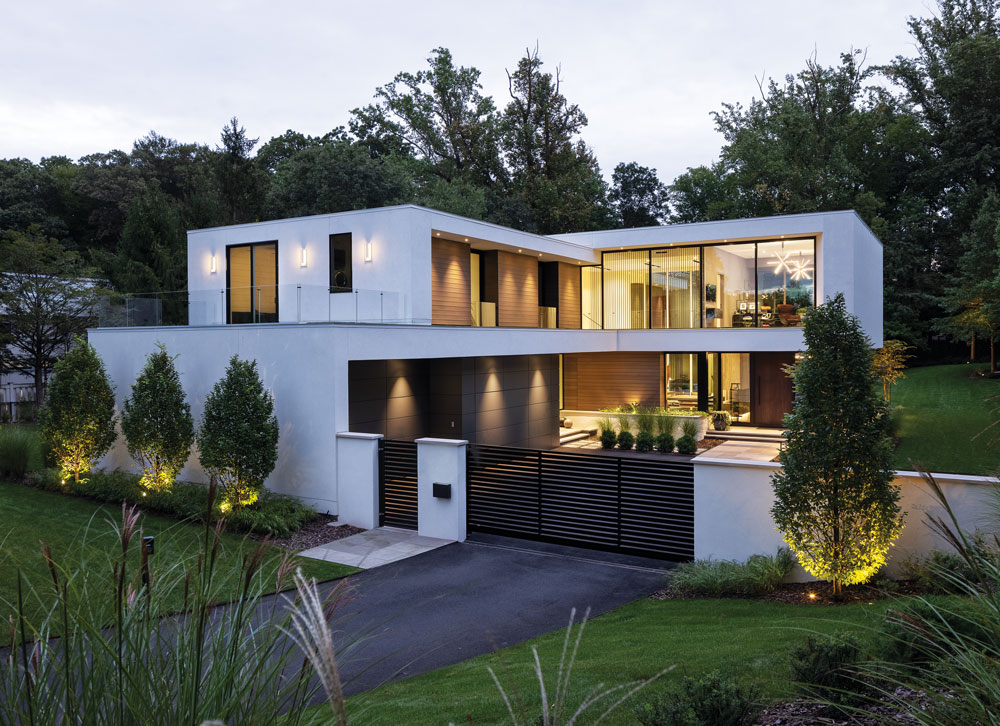
The home is clad in off-white stucco and horizontal siding made of maintenance-free simulated wood. “The doors of the four-bay garage to the left of the front entry are composed of gray aluminum panels,” architect Matthew Rosenbaum says. “We wanted the garage to look like a seamless part of the architecture, without the look of obvious garage doors when you drive into the entry courtyard.”
Matthew Rosenbaum’s clients purchased this Essex County, New Jersey, property — an empty lot at the time — in order to build their dream house. They envisioned a home with open-plan spaces, straightforward shapes and sophisticated, unfussy furnishings. To help create this streamlined aesthetic, they brought in Rosenbaum, of Summit-based Simonium Rosenbaum Architects Inc., to handle the architecture and the interior design.
Design NJ: What is the style of this home?
Matthew Rosenbaum: I do not try to emulate any specific style for a home. I would rather work toward the client’s requests and use finishes to reinforce the architecture. The owners requested an open floor plan, large windows and exterior spaces for entertaining. The home has features that resemble some houses in the hills of Los Angeles, so I guess you can call it “L.A. Modern.” The elements of that style seen in this house include high ceilings, connection of the interior and exterior spaces, and walls of glass that open and close. The house also features a variety of materials, such as natural stone and wood, that help define the spaces. What sets this house apart from other modern homes in the area is that it has a steel-frame structure, like an office building, rather than a traditional wood-frame structure. The steel framing allowed us to have the very large room sizes and the cantilevered balconies that reinforce a floating feeling. Wood framing would not be able to accomplish this.
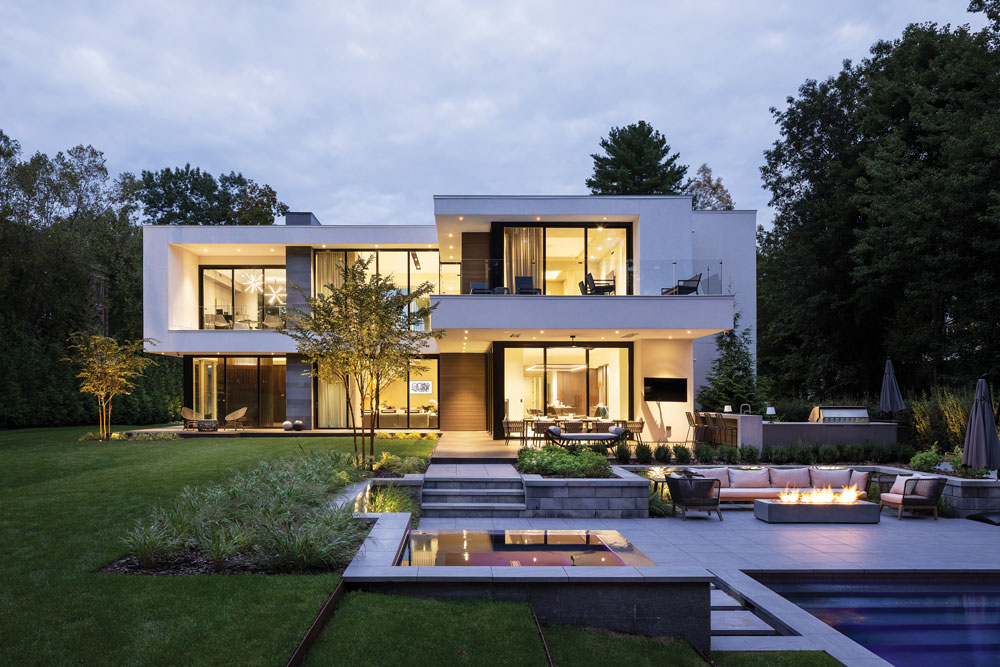
The project required a steel-frame structure to support the cantilevered balconies. The raised spa on the backyard patio features a waterfall edge. Water flows from the spa over stepping-stones and into the pool.
DNJ: Why did you choose to “hide” the garage doors?
Rosenbaum: The intent was to create a private parking court in the front of the home. The design dilemma was how to place the garages at the front without having to look at the doors. We created custom garage doors that are flush to the exterior wall surface and clad in a metal panel system. We designed the joints and panel sizes to coincide with the actual size of the door opening so that when the doors are closed, they are fully concealed. The unique thing about these doors is that they require a double-track system to be flush with the exterior wall. A standard garage door uses a single track and is normally mounted on the inside face of the garage wall, creating a recessed opening. Most people would have purchased a “modern style” garage door. These clients were astute enough to understand the difference between the two versions, and they decided on this design to create a fully integrated, seamless system.
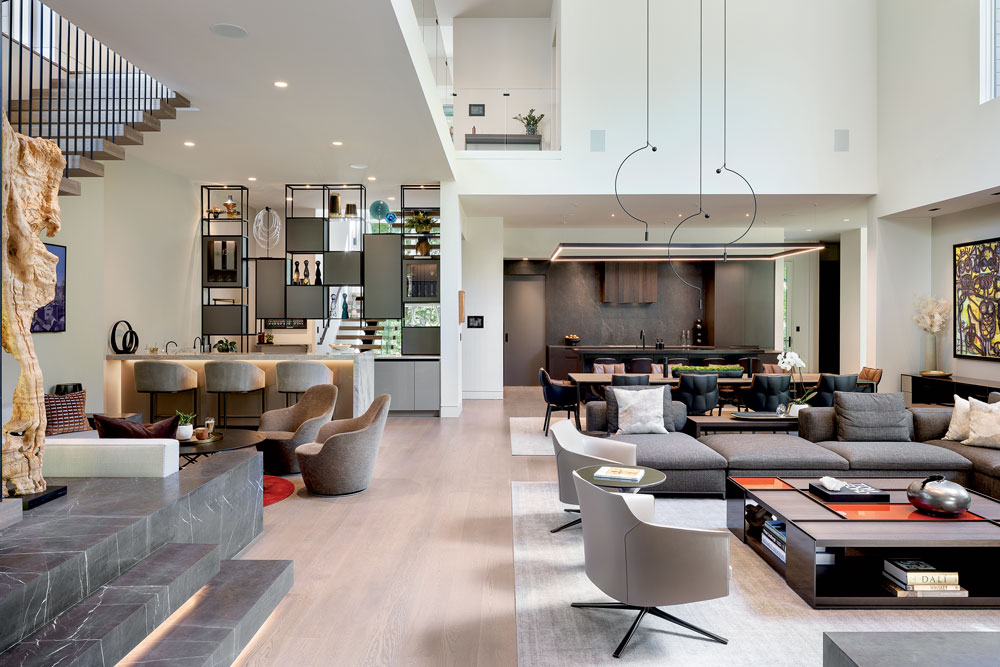
The first-floor living area features furnishings with simple, clean lines and neutral tones. Low-to-the-ground furniture accentuates the high ceilings. Hints of bold color appear in the coffee table and sitting area rug (at left). Rosenbaum and the clients found the driftwood sculpture on the stair platform at a gallery.
DNJ: How does the architecture enhance the interior spaces?
Rosenbaum: The architecture essentially defines all of the interior spaces. We created a large double-height space for the living/dining area that is enclosed by large panels of glass on two sides and features a full-height fireplace clad in book-matched marble panels. The open space is very light and airy for an interior space. We created a main staircase supported by metal rods from the second-floor ceiling to reinforce the idea that all the elements in the space are floating. The bottom platform of the stairs, which is made of stone, features recessed kicks, which also adds to the feeling that everything is lifting off the floor. We incorporated LED lighting in the recess of the steps to enhance the effect.
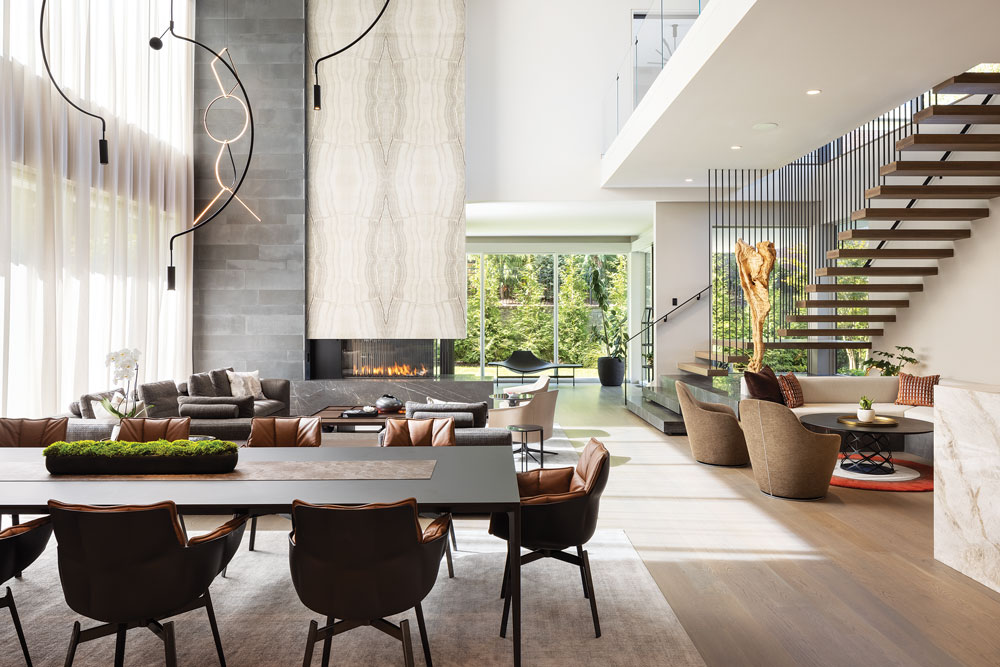
The double-sided fireplace is topped with a soaring swathe of book-matched marble. To the left of the marble is a band of basalt gray stone, which repeats on the home’s exterior. The two basalt pieces are separated by glass windows, which creates a visual connection between interior and exterior.
DNJ: How does the interior design complement the architecture?
Rosenbaum: We used simple, clean-lined furnishings that are low to the ground so they help to accentuate the high ceilings. To reinforce a straightforward aesthetic, we incorporated solid colors with some texture rather than large patterns or bright color. The lack of bright color and the use of darker earth tones like browns and grays allow the furnishings to integrate with the architecture and feel like everything is working together.
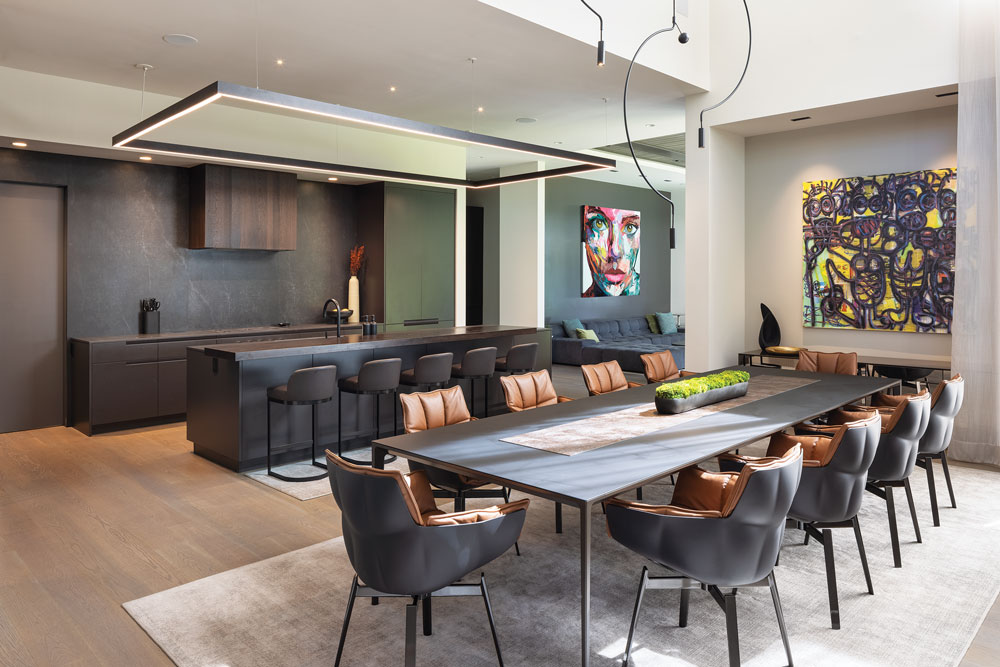
“Because the kitchen is within the main living space, the clients had a very specific requirement that it be minimal, with very few exposed appliances,” Rosenbaum notes. The door to the left of the counter leads to a prep kitchen, which contains a pantry and most of the appliances. “The countertops have a specific edge detail that reduces the thickness to 3/8 inch, so they seem to float above the cabinets,” he adds. Those thin countertops, plus a full-height stone backsplash and outlets recessed in the countertops, ensure an uninterrupted, sleek aesthetic.
DNJ: What inspired the lighting choices?
Rosenbaum: We didn’t want to do generic recessed lighting so we tried to incorporate lighting that would become part of the architecture. Essentially, we found light fixtures that seemed sculptural in nature and became elements within the space. Because the space is so devoid of any real articulation, we felt the hanging lights would add interest and provide some sense of scale. In the kitchen, in lieu of using heavy architectural ceiling details, we created a custom, rectangular LED fixture that we suspended over the island. Above that fixture, there are three tiny, recessed lights that are about a half inch in diameter with no trim rings, so they disappear when they are off. All of the lighting either adds to the interior design or disappears into the background.
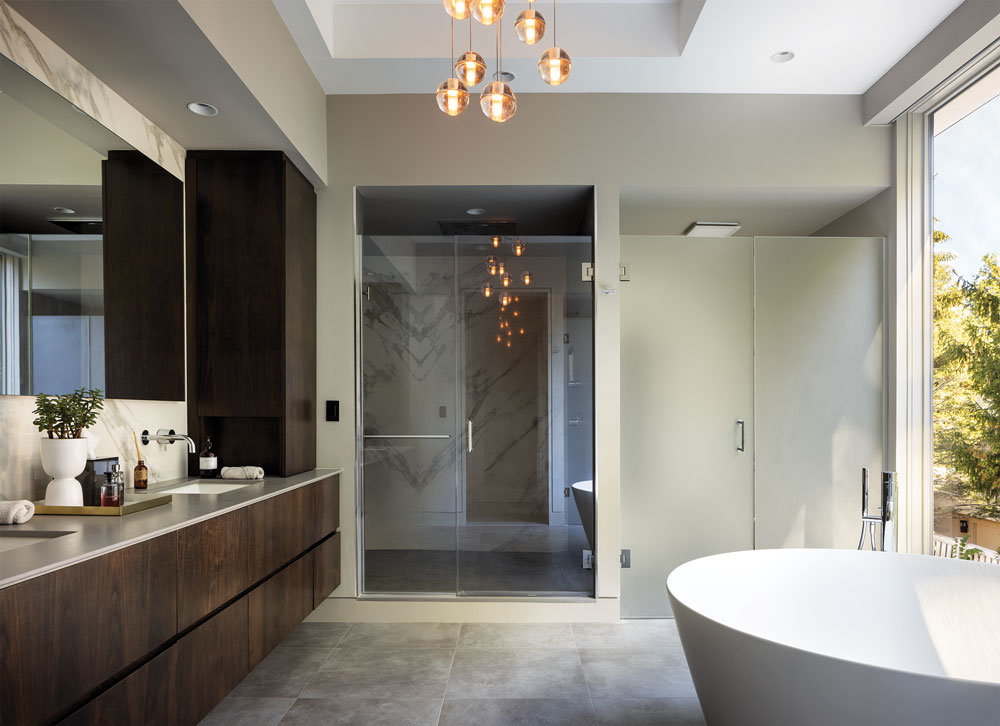
The shower in the primary bathroom features floor-to-ceiling, book-matched marble panels. The 5-foot-round bathtub and floating vanity mimic the straightforward aesthetic found in the rest of the house. The door to the right of the shower leads to a water closet.
DNJ: Did this project present any challenges? How did you address them?
Rosenbaum: This was a very complicated construction because, essentially, everything in the house is custom. It required a lot of time and attention. But this is one of my all-time favorite houses. The clients were a joy to work with: Every single thing that I wanted to do — the pool, the patio, the glazing, the detailing, the furniture — they were on board. They allowed me to feel free with the design, and the result was beyond my expectations.

An upstairs hallway overlooks the living area. Striking art pieces add pops of color to the neutral spaces.

